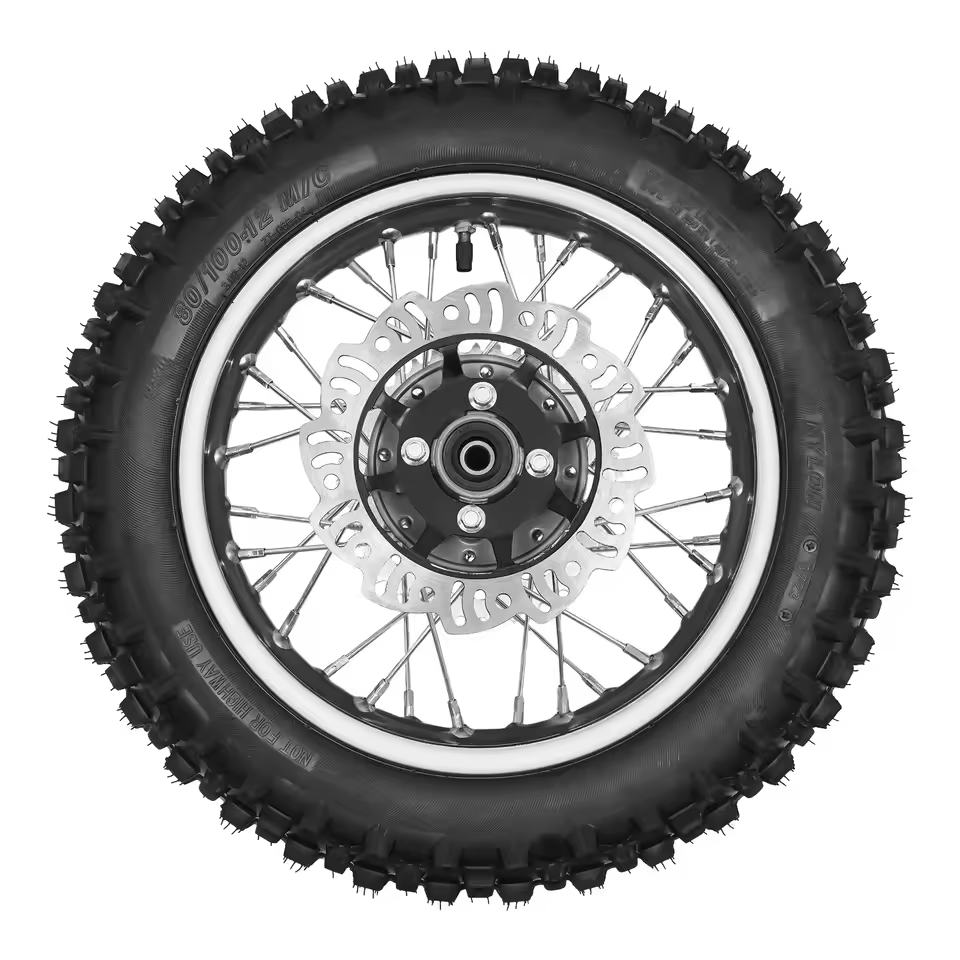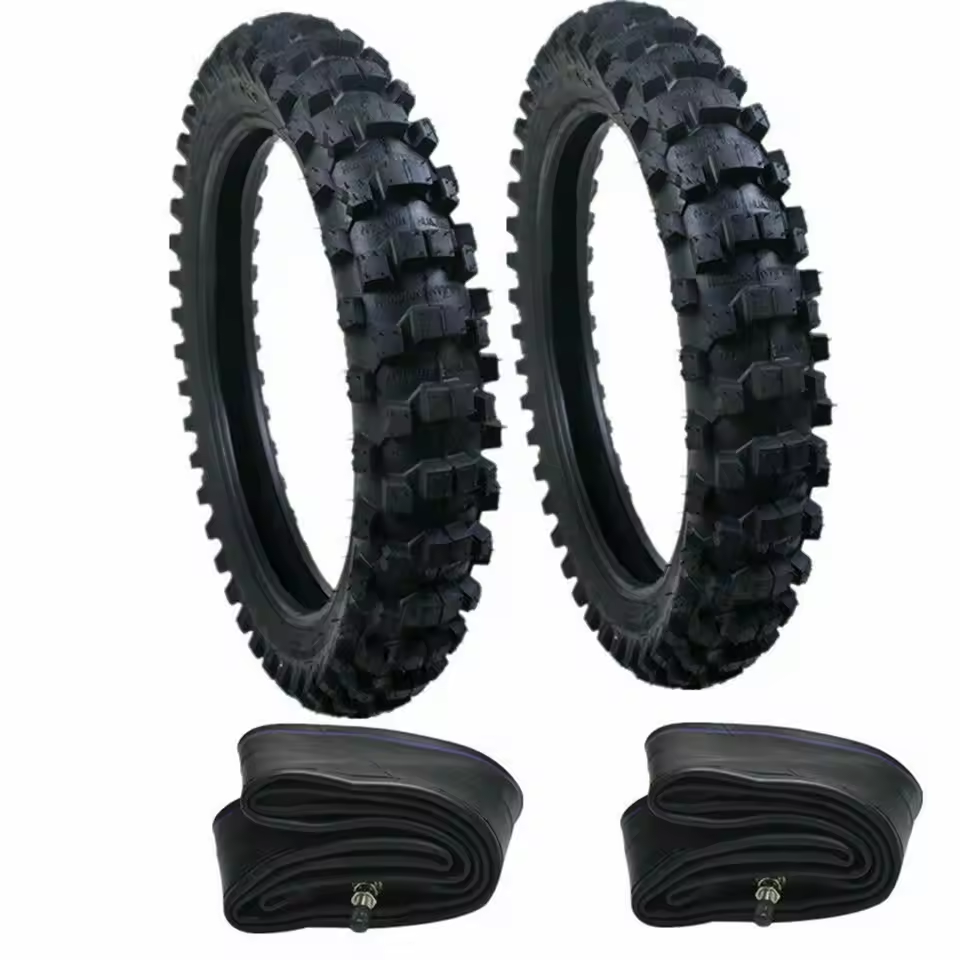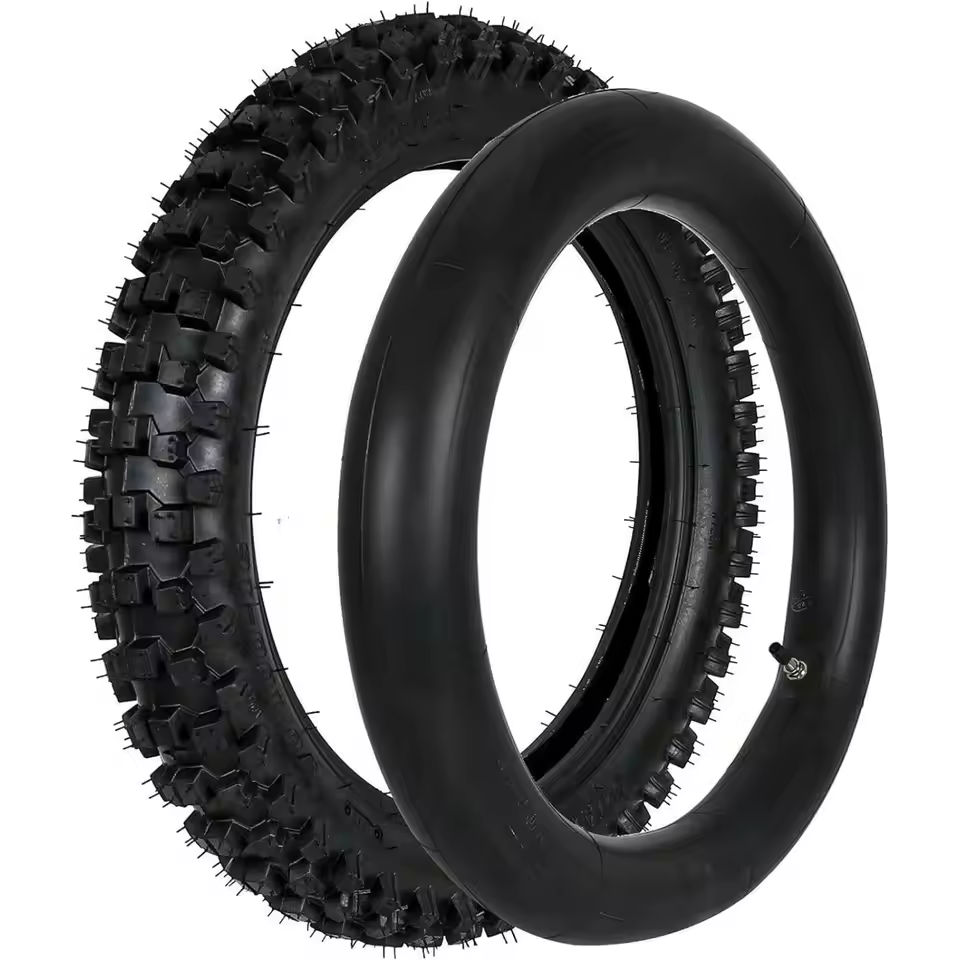Apr 15, 2025
Motorcycle Tires: Choosing, Maintaining, and Troubleshooting
Introduction to Motorcycle Tires: The Foundation of Safe Riding
Motorcycle tires are the unsung heroes of two-wheeled travel, connecting you to the road and influencing safety, performance, and comfort. Whether you’re a daily commuter or an off-road adventurer, understanding tire types, maintenance, and troubleshooting ensures optimal riding experiences. This guide covers everything from selecting the right tires to diagnosing issues like tires cupping meaning.
Start by defining your needs:
- Street riders: Prioritize grip and longevity.
- Off-road enthusiasts: Choose aggressive tread patterns for traction.
The Science of Motorcycle Tires: Construction and Materials
Motorcycle tires are engineering marvels, blending precision and material science to balance grip, durability, and comfort. Understanding their construction and materials helps riders make informed choices:
Tire Construction Types
- Bias-Ply Tires:
- Layers of nylon or polyester fabric crisscrossed at angles.
- Pros: Flexibility for off-road use, absorbs shocks on uneven terrain.
- Cons: Less stable at high speeds; heavier than radial tires.
- Best For: Trail bikes like the Honda CRF450X.
- Radial Tires:
- Steel belts run perpendicular to the bead.
- Pros: Even tread wear, stability at highway speeds, cooler operating temperatures.
- Cons: Stiffer ride; less suited for aggressive off-road use.
- Best For: Sport touring (e.g., BMW R 1250 GS).
- Belted Bias Tires:
- Hybrid design with a reinforced radial layer.
- Pros: Combines off-road grip with some on-road stability.
- Cons: Compromise in both categories.
Material Innovations
- Compound Blends:
- Soft compounds (30A Shore hardness): Enhance grip in wet conditions but wear faster (e.g., Michelin Power RS).
- Hard compounds (60A Shore hardness): Durable for long-mile touring (e.g., Bridgestone BT-022).
- Self-Sealing Technology:
- Inner liner filled with sealant (e.g., Continental TKC 80).
- Closes small punctures (≤3mm) automatically.
Load and Speed Ratings
- Load Index:
- Example: A tire with a 87 load index can handle 540 lbs per tire.
- Overloading reduces tread life and increases blowout risk.
- Speed Ratings:
- V (149 mph): Standard for sport touring.
- Z (149+ mph): Required for racing tires.
Choosing the Best Motorcycle Tires: Factors to Consider
Selecting the best motorcycle tire brands involves evaluating terrain, riding style, and budget. Below is a detailed breakdown of key factors:
Terrain-Specific Tires
- Street Tires:
- Wet-weather performance: Look for lateral grooves and sipes (e.g., Pirelli Diablo Rosso IV).
- Longevity: Bridgestone BT-022 offers 15,000-mile tread life in urban use.
- Adventure Tires:
- Dual-Sport Options: Metzeler Karoo 3 excels on asphalt and gravel trails.
- Aggressive Lugs: Continental TKC 80 has 12mm lugs for mud/sand.
- Track Tires:
- Compound Flexibility: Dunlop Sportmax Roadsmart 3 has a sticky compound for lap times.
- Heat Resistance: Michelin Power RS maintains grip at high temps.
Brand Comparisons
- Michelin:
- Strengths: Wet-weather grip and consistent performance.
- Weakness: Expensive compared to competitors.
- Continental:
- Strengths: Durable construction for off-road use.
- Weakness: Less responsive in tight corners.
- Hankook:
- Strengths: Affordable entry-level options (e.g., Road Venture K425).
- Weakness: Shorter tread life in aggressive riding.
Budget-Friendly Options
- Maxxis Racer HT II:
- Price: 80–100 per tire.
- Performance: Reliable for daily commuting and light touring.
- Dunlop SportSmart 2:
- Price: 120–150.
- Performance: Balanced sport-touring capabilities.
Motorcycle Tire Maintenance: Extending Lifespan and Performance
Regular maintenance ensures tires perform optimally and last longer. Below are detailed steps for upkeep:
Pressure Checks
- Monthly Inspections:
- Use a digital gauge (e.g., Accutire MS-4311B) for accuracy.
- Example: A Harley-Davidson Sportster requires 32 PSI front/38 PSI rear.
- Seasonal Adjustments:
- Winter: Lower pressure by 2–3 PSI for better traction on ice/snow.
- Summer: Increase pressure by 1–2 PSI to reduce overheating.
Tread Wear Monitoring
- Tread Depth Gauge:
- Insert the probe into the tread grooves.
- Replace tires when depth drops below 2/32″ (1.6mm).
- Rotation Patterns:
- Front-to-Back Swap: Every 5,000 miles.
- Cross Rotation: Not recommended for radial tires (uneven wear risks).
Storage Tips
- Long-Term Storage:
- Store tires vertically in a climate-controlled room (50–70°F).
- Avoid stacking to prevent flat spots.
- Avoid Sunlight:
- UV rays degrade rubber, causing cracking. Use opaque covers.
Emergency Fixes:
- Temporary Sealants: Fix-a-Flat can plug punctures ≤3mm.
- Temporary Tire Boots: Wrap around sidewall cuts to prevent blowouts.
Understanding Tire Cupping: Causes and Solutions
Tires cupping meaning refers to uneven wear patterns resembling small concave areas on the tread. This issue arises from mechanical and riding factors:
Advanced Causes
- Unbalanced Wheels:
- Use a tire balancer (e.g., Hunter GSP9700) to add weights.
- Costs: 20–50 per wheel at dealerships.
- Worn Suspension Components:
- Shock absorbers: Replace if they leak or sag (cost: 150–300 per unit).
- Spring Compression: Over-compressed springs reduce damping efficiency.
Diagnosis Tools
- Vibration Analysis:
- Apps like WheelAlign detect imbalance through smartphone sensors.
- Professional tools like the TIREPRO 3000 provide precise measurements.
- Tread Profiling:
- Laser scanners map wear patterns to identify cupping locations.
Solutions
- Suspension Repair:
- Adjust fork preload: Use a fork gauge to set proper damping.
- Replace bushings: Worn suspension bushings cause misalignment.
- Wheel Alignment:
- Camber Adjustment: Ensure wheels are perpendicular to the ground.
- Caster/Angle Settings: Follow manufacturer specifications (e.g., 2°–3° for sport bikes).
Prevention Tips
- Regular Maintenance Schedules:
- Inspect shocks every 10,000 miles.
- Replace tires at 3/32″ tread depth to avoid uneven wear.
Tire Pressure Guide: Optimizing Performance and Safety
Proper inflation is critical for tire longevity, safety, and overall riding performance. Below is an in-depth guide to optimizing motorcycle tires pressure across different scenarios, including seasonal adjustments, load management, and specialized riding conditions.
1 Manufacturer Specifications: The Foundation of Tire Pressure
Every motorcycle tire has recommended PSI (pounds per square inch) values, typically found on the bike’s placard (often located on the fuel tank or swingarm). These numbers are not arbitrary—they’re engineered to balance grip, load capacity, and tire wear.
- Front vs. Rear Pressure:
- Most bikes require different pressures for front and rear tires.
- Example: A Honda Gold Wing Tour requires 32 PSI front/38 PSI rear for optimal load distribution.
- Sidewall Limits:
- Never exceed the maximum PSI listed on the tire sidewall (typically 44–50 PSI).
- Over-inflation reduces contact patch area, leading to poor grip and harsh ride quality.
2 Seasonal Adjustments: Temperature and Weather
Temperature fluctuations directly impact tire pressure:
- Winter Riding:
- Cold Weather: Tires lose 1 PSI for every 10°F drop in temperature.
- Recommendation: Increase pressure by 2–3 PSI to maintain proper contact with icy/snowy surfaces.
- Snow Tires: Lower pressure (2–3 PSI below standard) improves traction on loose snow.
- Summer Riding:
- Heat Buildup: Tires expand as they warm up, increasing pressure by 5–10 PSI during long rides.
- Recommendation: Start with 2–3 PSI above the manufacturer’s cold PSI to account for heat.
- Avoid Over-Inflation: Excess pressure can cause hydroplaning on wet roads.
3 Load Management: Adjusting for Passengers and Cargo
Adding weight to your motorcycle alters tire pressure requirements:
- Passenger Load:
- Add 5 PSI to both tires for a 150-lb passenger.
- Example: A Harley-Davidson Street Glide’s rear tire increases from 38 PSI to 43 PSI.
- Luggage and Gear:
- Soft Saddlebags: Add 2 PSI per 50 lbs of gear.
- Hard Cases: Add 3 PSI for every 100 lbs of luggage.
- Overloading Risks:
- Exceeding the tire’s load rating (marked on the sidewall) causes uneven wear and blowouts.
4 Specialized Riding Conditions
Adjust pressure for specific scenarios to enhance performance:
- Track Day Riding:
- Front Tires: Lower pressure by 2–3 PSI for better cornering grip.
- Rear Tires: Increase pressure by 1–2 PSI to prevent overheating under high loads.
- Off-Road Adventures:
- Loose Gravel/Sand: Reduce pressure to 25–30 PSI for increased tread contact.
- Rocky Trails: Maintain standard pressure to avoid sidewall damage.
- Rainy Conditions:
- Wet Roads: Slightly lower pressure (1–2 PSI) to widen the contact patch and improve grip.
5 Tools and Techniques for Accurate Pressure Checks
- Digital Gauges:
- Accuracy: Choose gauges with ±0.5 PSI precision (e.g., Redline RLP2000).
- Cold Inflation: Check pressure when tires are cool (≤60°F). Hot tires can give false readings.
- Pressure Charts:
- Use apps like TireRack or Tire Pressure Pro to input bike model and load for real-time adjustments.
- Regular Schedules:
- Check pressure weekly, especially before long trips.
- Emergency Adjustments: Carry a portable compressor for mid-ride corrections.
6 Tire Pressure and Fuel Efficiency
Optimal pressure reduces rolling resistance, improving fuel economy:
- Under-Inflation:
- Increases rolling resistance by 10–15%, reducing mileage.
- Example: A 10% under-inflated tire can lower fuel efficiency by 3%.
- Over-Inflation:
- Harshens ride quality and reduces tire lifespan but may slightly improve mileage.
7 Common Mistakes to Avoid
- Ignoring Temperature Changes:
- Riding with winter pressure in summer can cause blowouts.
- Using Gas Station Gauges:
- These often provide inaccurate readings due to frequent use.
- Over-Adjusting for Weather:
- Example: Lowering pressure below 20 PSI in snow can cause tread separation.
8 Advanced Tips for Tire Pressure Optimization
- Tire Rotation Patterns:
- Rotate front-to-rear every 5,000 miles to even out wear caused by pressure differences.
- Track Day Preparation:
- Mark tire pressure on the bike before a track session to ensure consistency.
- Storage Adjustments:
- Store tires at 30 PSI to prevent flat spots when not in use.
Tire Tread Patterns: Choosing the Right Design
Tread patterns determine a tire’s performance in different conditions. Below are detailed analyses of designs and their applications:
Street Tread Patterns
- Symmetrical Patterns:
- Example: Bridgestone BT-022’s even wear for touring.
- Performance: Stable at highway speeds; moderate wet grip.
- Directional Patterns:
- Example: Pirelli Diablo Rosso IV’s arrow-shaped grooves.
- Performance: Excellent water evacuation; ideal for rain.
Off-Road Treads
- Aggressive Lugs:
- Example: Continental TKC 80’s 12mm lugs for mud/sand.
- Performance: Deep grooves expel debris on rocky trails.
- Block Patterns:
- Example: Maxxis Racer HT II’s squared blocks for grip on gravel.
All-Terrain Compromises
- Dual Sport Tires:
- Example: Metzeler Karoo 3’s hybrid design.
- Performance: Balances 60% street/40% off-road use.
Scientific Principles
- Drainage Channels:
- Wide grooves (e.g., 5mm width) reduce aquaplaning risk.
- Sipes:
- Small slits in tread blocks enhance grip in cold/wet conditions.
Final Thoughts: Prioritize Tire Quality and Care
Motorcycle tires are your bike’s only contact with the road—invest wisely and maintain them rigorously. Whether you’re tackling mountain trails or city streets, the right tires paired with proactive care ensure safety and performance.
Research brands, inspect tread wear, and address issues like tire cupping meaning promptly. Your riding adventures depend on it—ride smart, ride safe!
More Details



